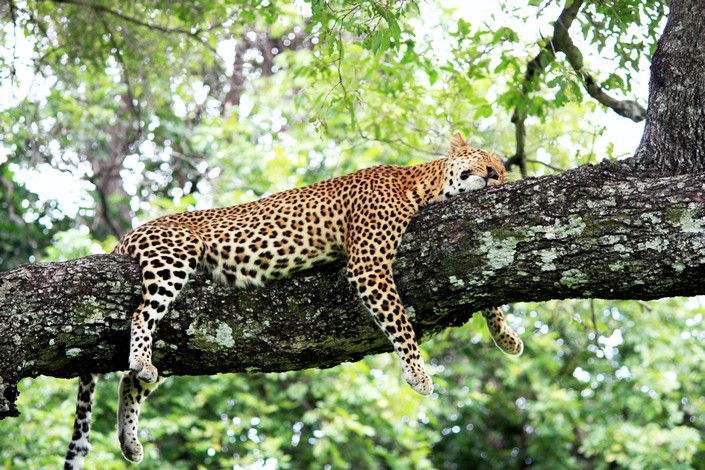If you have not had the opportunity of trekking through Africa’s dense, dank forests and coming across a group of lazing gorillas, on an African safari then you have not experienced the very best of what Africa has to offer. Africa is filled with millions of beautiful animals, many of which you can easily come across on any overland safari, but with only about 800 of these human-like primates still surviving, you can see why it is a must to visit, or at least support the existence of these animals.
It can take anything from 45 minutes to 8 hours before you can spot your first gorilla. This means that you need to be prepared for this. This includes fitness and the clothes you wear. You need a reasonable level of fitness, so make sure you take a few long walks, at least 3 times a week to prepare your body. Remember you will be trekking through thick, dense forests and uneven terrain, so keep this in mind. Your trekking is also very dependent on the weather, and the guides will decide whether a trek is viable or not. Sometimes you can spend a few days at camp just waiting for the weather to clear, or there could be other extenuating circumstances. However, all of this is worth it when your eyes fall upon a troupe of gorillas quietly biding their time foraging for food, or seeing a Mommy gorilla playing with her big-eyed, furry baby!
Gorilla Trekking Safaris
Due to the fact that we share some of the same DNA as these mammals, if you are carrying a virus you will not be allowed to see them. Also the time spent with them is restricted to one hour, this is not only so we don’t transfer any diseases, but also to ensure they are kept wild and don’t get used to the presence of humans. Also no children under the age of 16 are permitted on these tours.
The following is a list of clothing you should wear on your gorilla trek. This list has been gleaned from other travellers who have experienced this privilege.
Lightweight waterproof jacket (it is damp, or it could be misty, or rain)
Hiking boots that you have worn in
Waterproof over-trousers or gaiters
Long lightweight shirts to protect your arms from scratches through the dense forest
Long socks that you can tuck your trousers into
Layer your clothing, so wear a T-shirt under your shirt as you will build up a sweat
Expensive clothing is not necessary – it will get muddy/torn
Fleece jackets for the evenings
Quick-drying hiking trousers (definitely not jeans)
Flip-flops/sandals for around the campsite and to give your feet a rest
Shorts
Extras
Camera (no flashes are allowed when are sitting with the gorillas)
Binoculars
Daypack
Travel clothes-wash
Tissues/wet wipes
Mosquito/insect repellent
Sunscreen/after sun care
Large plastic zip-lock bags
Broad-brimmed bush hat or cap
Sunglasses
With this list, and the help from your travel guides, you are good to go!





0 Comments